Author: Cade Jobe
Although pop-culture often associates mead with Nordic pillagers, the beverage itself has been around for thousands of years, with the earliest evidence dating to 4000 BCE. Though the beverage has likely changed quite a bit in the last 6000 years, it is still in production today. Mead, the most basic of honey wines, is relatively simple to make– mix some honey with water, add yeast, and let it ferment. However, similar to brewing, there is much more nuance required to make high-quality mead.
Despite the prolonged existence of mead, I was only recently introduced to the beverage. Being from Austin, I’m lucky to have Eric Lowe and the team at Meridian Hive Meadery close at hand, as well as friend of Brülosophy Matt Crispen, each producing fantastic high-quality meads. My first experience with mead was at an Austin ZEALOTS meeting a few years back where I was able to try meads made by both Meridian Hive and Matt Crispen, each of which were excellent!
My wife and I are especially fond of Meridian Hive’s peach session mead, which given the inclusion of fruit, is technically a melomel. Sitting on our front porch while sipping the tasty beverage, I began talking about how easy it is to make mead–“It’s just water and honey.” That’s when my wife asked, “Well, if it’s so easy, why don’t we make some?” Having no idea about nutrient additions, back sweetening and off-gassing, our first attempt was a mess, but we trudged on and decided to try our hand at making a sessionable peach melomel inspired by Meridian Hive’s tasty peach session mead.
| Making Peach Melomel |
The recipe for this batch was quite simple and included locally sourced wildflower honey, fresh peaches, and a popular wine yeast.
Peach Melomel
Recipe Details
| Batch Size | Boil Time | IBU | SRM | Est. OG | Est. FG | ABV |
|---|---|---|---|---|---|---|
| 5 gal | 0 min | 0.0 IBUs | 10.8 SRM | 1.048 | 0.996 | 6.8 % |
| Actuals | 1.048 | 0.999 | 6.4 % | |||
Fermentables
| Name | Amount | % |
|---|---|---|
| Peaches - halved and pitted | 3 lbs | 23.08 |
| Honey - Wildflower | 6 lbs | 46.15 |
| Honey - Wildflower | 4 lbs | 30.77 |
Miscs
| Name | Amount | min | Type | |
|---|---|---|---|---|
| GoFerm Protect | 6.30 g | 0 min | Primary | Other |
| Potassium Metabisulfite | 3.00 g | 0 min | Primary | Other |
| Bentonite | 4.00 tsp | 10 days | Primary | Fining |
| Fermaid O | 2.60 g | 13 days | Primary | Other |
| Fermaid O | 2.60 g | 14 days | Primary | Other |
| Fermaid O | 2.60 g | 15 days | Primary | Other |
Yeast
| Name | Lab | Attenuation | Temperature |
|---|---|---|---|
| Lalvin 71B-1122 (71B-1122) | Lallemand - Lalvin | 75% | 59°F - 86°F |
Download
| Download this recipe's BeerXML file |
Having read several places that boiling honey is unnecessary when making mead, I started off by placing the honey jars in warm water to make it easier to pour.
It’s commonly recommended to do staggered nutrient additions during the first few days of fermentation, so after using an online TOSNA calculator to determine the total amount of Fermaid-O needed, I evenly split it between 3 baggies.
I then blended the Go-Ferm with about 500 mL of water in a sanitized flask before adding a single sachet of Lalvin 71B dry yeast to hydrate.
While the yeast was rehydrating, I rinsed, de-pitted, and sliced the peaches before adding them to a sanitized 6 gallon/23 liter glass carboy. No additional processing of the peaches occurred.
Next, I added 2.5 gallons/9.5 liters of warm tap water to the fermenter along with the honey, a small amount of potassium metabisulfite, and the first dose of Fermaid-O. After adding another 2.5 gallons/9.5 liters of water and giving the fermenter a good shake to homogenize everything, I took a hydrometer measurement confirming the must was at my 1.048 OG target then added the rehydrated yeast.
The melomel was left to ferment in my guest bathroom, which maintains a consistent 72°F/22°C. I added the pre-measured nutrients on days 1, 2, and 3 of fermentation, making sure to shake the carboy each time to encourage off-gassing. With signs of fermentation absent after 15 days, I took a hydrometer measurement showing the melomel had reached a very dry 0.999 FG, which put it at 6.4% ABV.
I added the bentonite and let the melomel sit for another 48 hours, at which point I proceeded with packaging. As the melomel flowed into the sanitized keg, I added 5 lbs/2.25 kg of wildflower honey for back-sweetening and a dose of acid blend to liven up the flavor.
After sealing the filled keg, I purged the headspace and vigorously shook it to make sure the honey and acid blend were fully dissolved, at which point I placed it in my keezer. Aiming for a slightly petillant melomel, I hit the keg with 5 psi of CO2 and let it condition for 3 months before beginning to drink it.
| IMPRESSIONS |
By most accounts, mead is the oldest alcoholic beverage in existence, a simple concoction of fermented honey that’s been enjoyed by humans for many millennia. While the mead makers of yore likely viewed fermentation as a miraculous act of the gods and may not have fully understood the impact honey from different sources has on flavor, modern mazers have numerous processes and ingredient options available to them.
Mead has a number of common variants that have been assigned unique monikers, one of the more popular being melomel, which is simply a fruited mead. Perhaps it’s my southern roots, but I’m a huge fan of peaches and was excited to try my hand at making a peach melomel.
While not a carbon copy of Meridian Hive Meadery’s peach session mead, which was my inspiration for this Brü It Yourself, I was incredibly pleased with how my peach melomel turned out. I tend to prefer meads with more robust honey character and some residual sweetness, which was definitely the case here. The floral aromatics imparted by the local wildflower honey were prominent and enticing, beautifully complimenting the distinctly identifiable peach flavor. Any concerns I had about this melomel being one-dimensional immediately faded upon my first sampling.
Considering this was only my second batch of mead, I’m very happy with the outcome and look forward to experimenting with different variations in the future. Having served this particular melomel with petillant carbonation, I’m curious to see how a bit more fizz affects future versions. Either way, for those who enjoy both honey and peaches, this simple session melomel is a real winner!
If you have thoughts about this recipe or experience making something similar, please feel free to share in the comments section below!
Support Brülosophy In Style!
All designs are available in various colors and sizes on Amazon!
Follow Brülosophy on:
FACEBOOK | TWITTER | INSTAGRAM
If you enjoy this stuff and feel compelled to support Brulosophy.com, please check out the Support page for details on how you can very easily do so. Thanks!



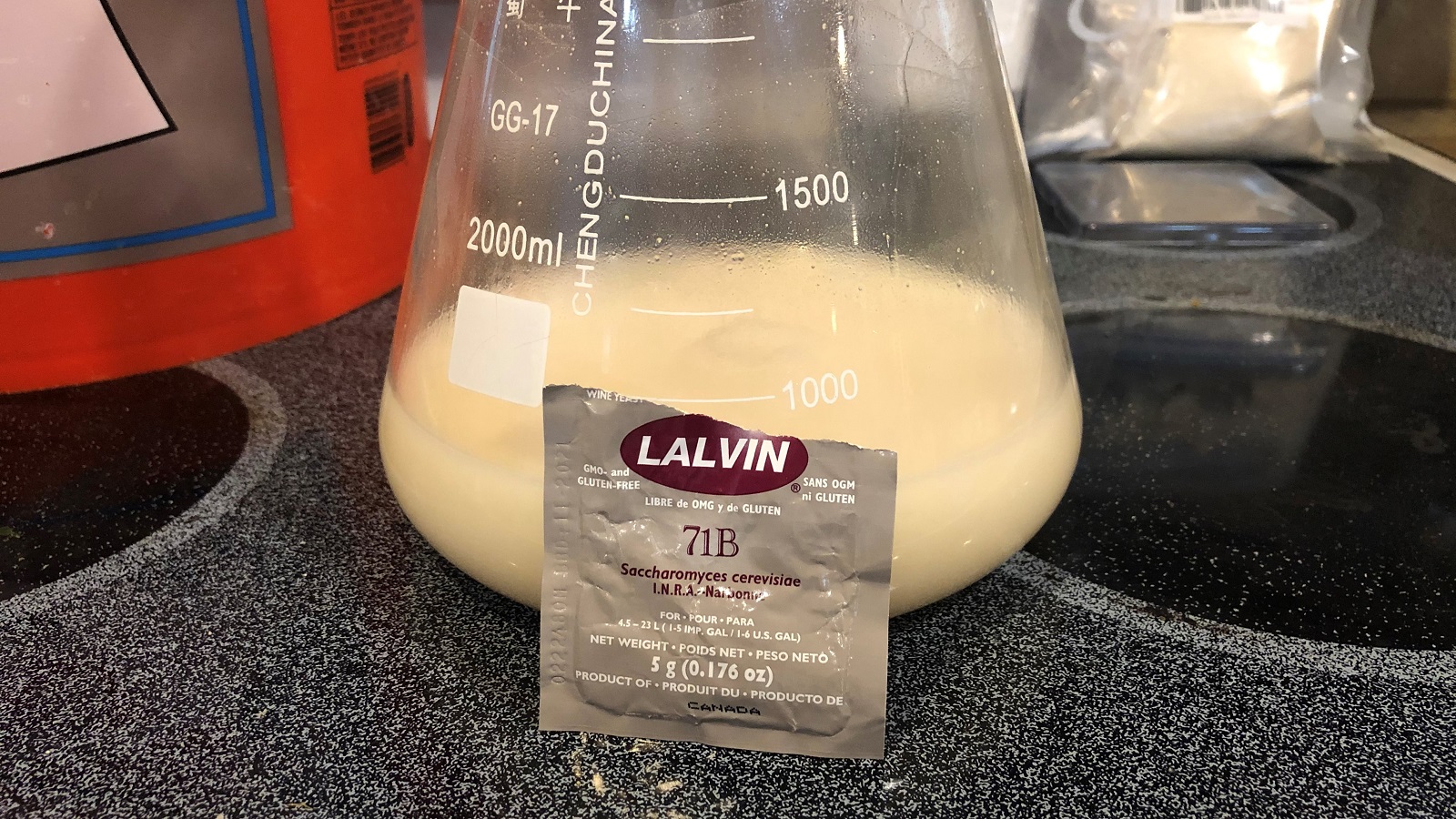
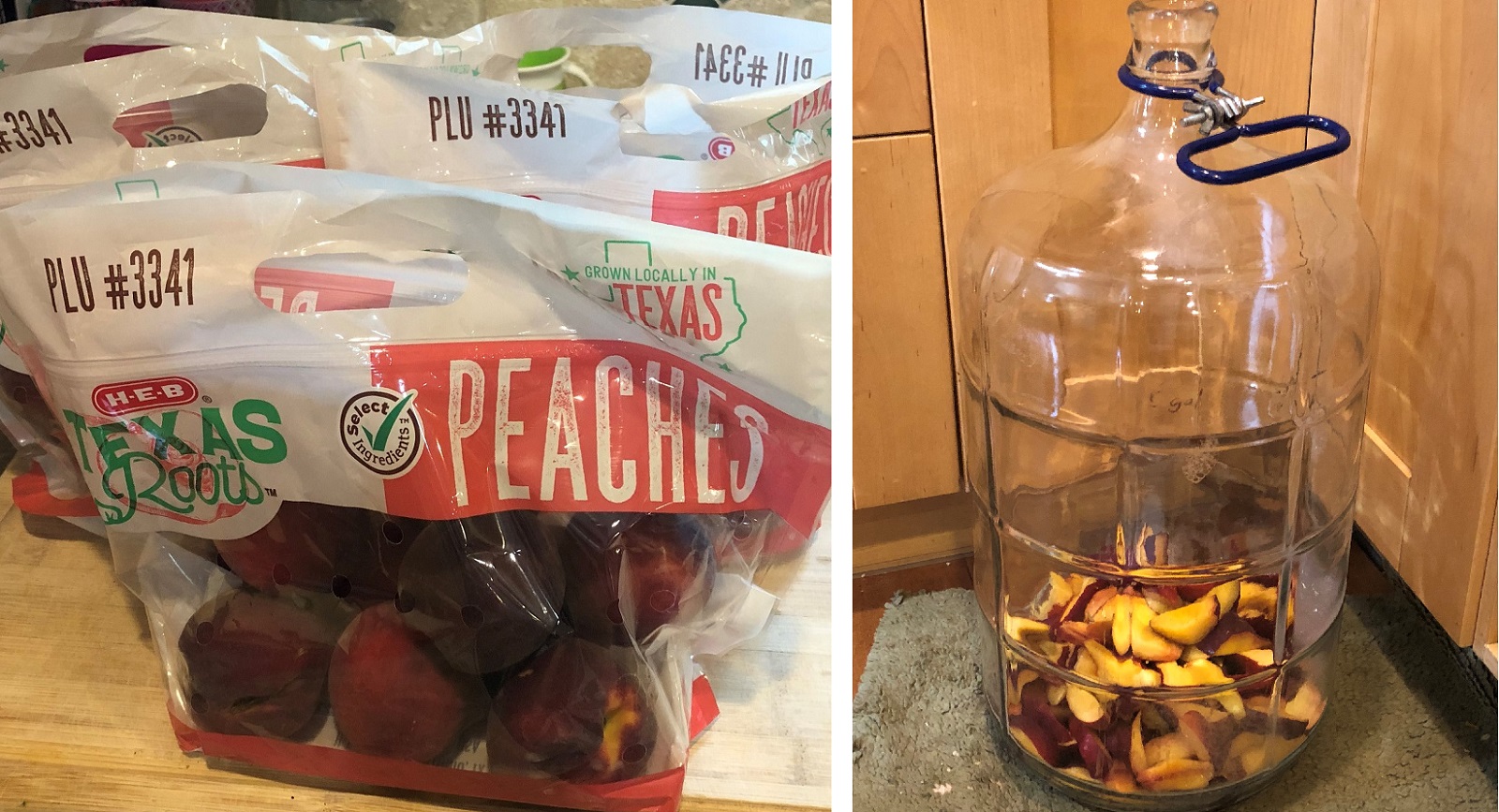
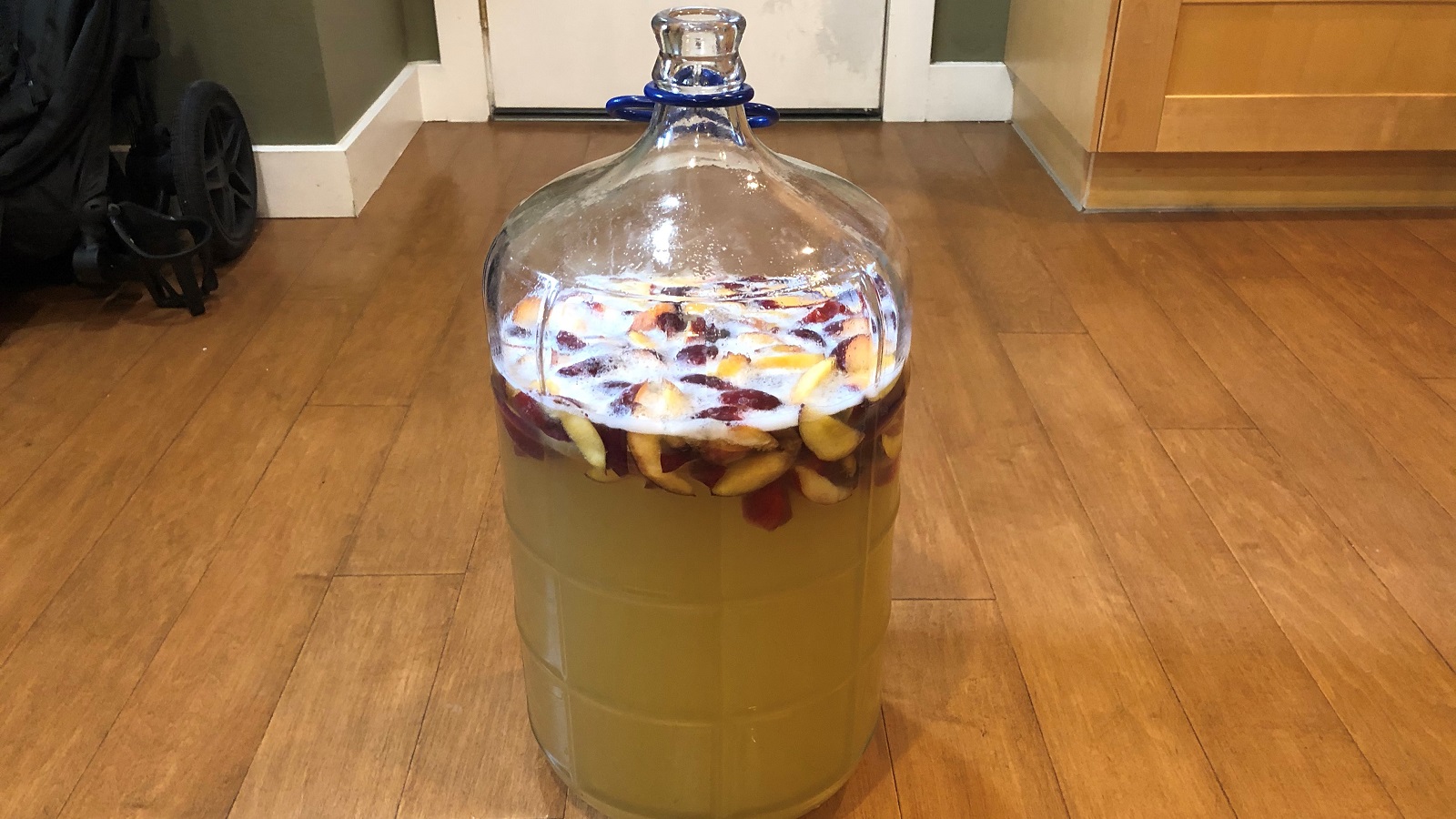
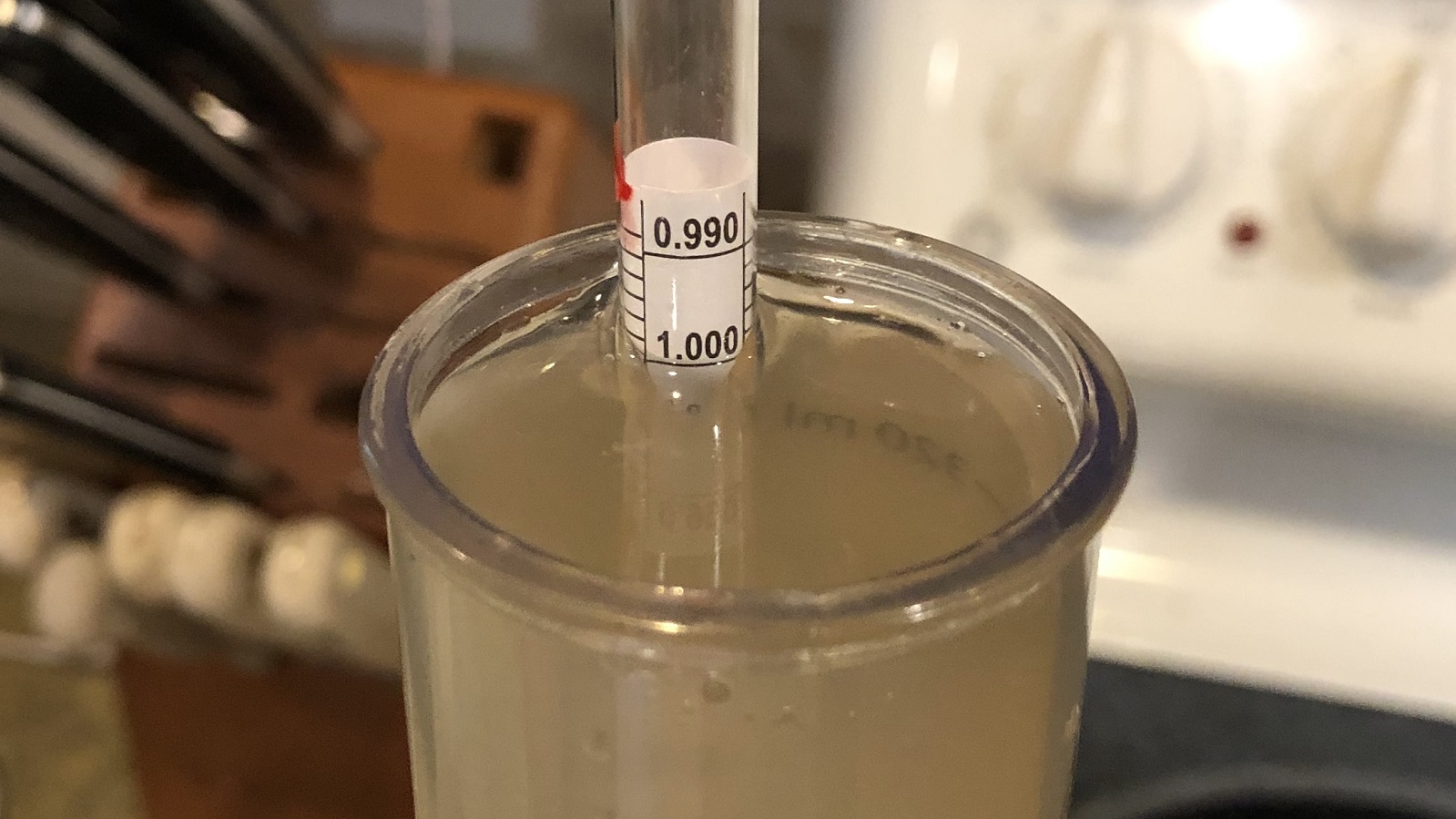

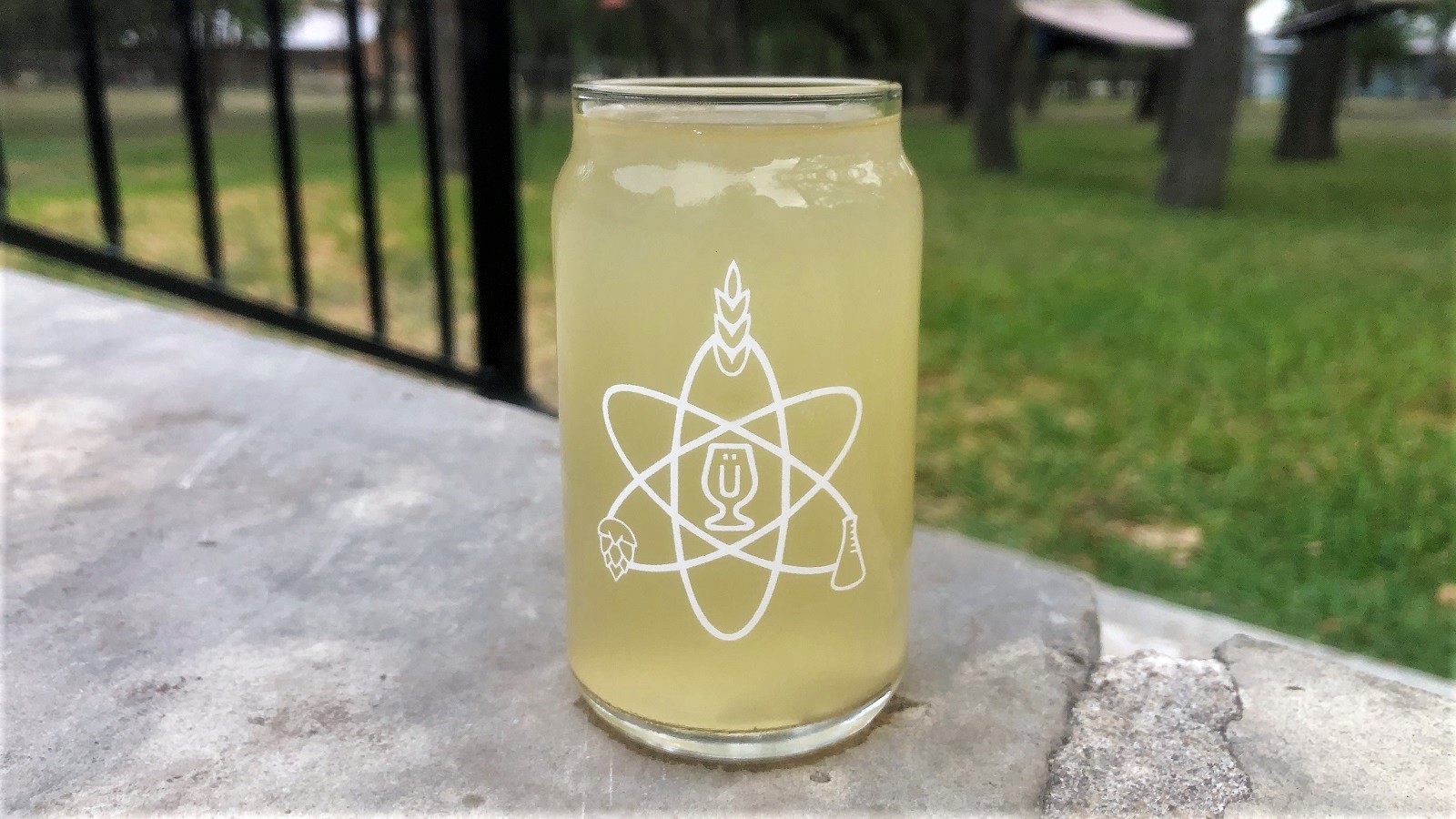











6 thoughts on “Brü It Yourself | Peach Melomel”
Hi Cade. Love the article. I’ve been thinking about exploring melomel latel with all fruit that ripens around me these days.. I’m curious about the back sweetening step. You added more honey with acid blend. What was the acid blend? Was it intended to inhibit the restarting of fermentation? I usually use potassium sorbate for that. Also, do you think pectin enzyme prior to fermentation would help with the clarity?
Hi Eric! This is only my second mead, so I’m no expert. The acid blend is a blend of malic, tartaric, and citric acids sold as “acid blend.” (e.g. – https://socohomebrew.com/acid-blend-1-lb/). I added it to round out the sweetness and dryness, not to inhibit fermentation. I did not add potassium sorbate on this batch, but I will in the future. I crashed the mead as soon as I added the back-sweetening honey so that it wouldn’t have time to ferment. As far as pectic enzyme, I certainly use it in ciders, but I honestly don’t know anything about using it in mead. It seems like it would work to help with clarity in this mead, but I like haziness in melomels as it makes it seem like it’s “natural” juice. Just a personal preference, though.
Is it really this simple? With beer I sanitize, sanitize, sanitize, I can’t imagine the rinsed peaches to be sterile.
Also, I expect you ABV would be higher, the sugars in the peaches aren’t soluble in the mead when you took the the OG sample.
Eric, I’ve had tremendous success with pectinase in my peach mead, even after primary finished. Calcium Carbonate also seemed to move the flocculation process along. I’m starting to add them in earlier in some demo batches. I prefer minerality in wines, so additional calcium is fine by me!
I am a big fan of pectic enzyme also. In fact, I add it before fruit in my ciders and meads as it encourages the breakdown of the fruit, which I think leads to better extraction.
Bold move not stabilizing after a heavy dose of honey for back-sweetening. Although I will say I’ve never added sulfites to back-sweetened mead or cider, only potassium sorbate, which has always worked for me.
Been really enjoying mead lately. I love that it’s something you can enjoy after dinner, light enough but with a bit of a kick. You make it sound so easy, I wish we can brew our own beers when we finally have a place of our own.